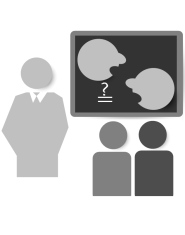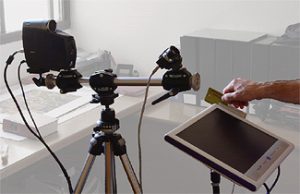 Research
Research
Learning Geometry
Deformable and non-rigid objects play an important role in many applications ranging from medical image analysis to robotics and gaming. Such applications require the ability to acquire, reconstruct, analyze, and synthesize non-rigid shapes. These procedures pose challenging problems due to the vast number of degrees of freedom involved in non-rigid deformations. Current models often restrict the objects of interest to a narrow class of similar shapes. Even today, reconstruction, analysis, and synthesis of arbitrary deformable shapes remain unsolved problems, a practical solution of which would be a major scientific milestone. My research aims at answering these fundamental questions by adopting tools from modern geometry. For example, we showed that metric geometry tools provide answers to some of these questions, and, coupled with modern learning techniques, pave the way to the next generation of our understanding of the world. Our goal is to develop computational tools while demonstrating their efficiency on several challenging real-life applications that involve learning of big (geometric) data, such as computer aided surgery and diagnostics in medical imaging, crop phenotyping in computational agriculture, and computational biometry. In the last decade we managed to apply deep learning methodologies into our exploration of geometric structures.
- GIP Lab in a brief:
While exploring metric and differential geometry we developed tools like
- Deep learning methodologies for analysis of geometric structures.
- Integral geometric measures, and variational techniques for image processing.
- Modeling non-rigid surfaces as near isometries.
- Modeling images as metric spaces like the Beltrami framework and the geodesic active contours.
- Shape reconstruction from various cues and priors.
- Implicit formulations of propagating interfaces, accurate segmentation.
- Fast computation of distances on surfaces. See SIGGRAPH’08 trailer
THE 3DFACE PROJECT:
Together with my students at the time, identical twins Alex and Michael Bronstein, we developed an expression-invariant 3D face recognition system. According to our model, a person’s identity is associated with the intrinsic geometry of his or her facial surface, while the facial expressions are associated with the extrinsic geometry.
Prototype of our 3D face recognition system developed at the Technion. (Photo: November 2004)
COVER STORIES:
R. Kimmel and G. Sapiro, The mathematics of face recognition, SIAM News, 36(3), 2003
D. Voth, Face recognition technology,IEEE Magazine on Intelligent Systems, 18(3):4-7, 2003
G. Sapiro, Abel Prize lecture: Revolutionary work in geometry and shape analysis, SIAM News, 42(6), 2009
R. Kimmel, Metric geometry in action, SIAM News, 44(8), 2011
On TV:

